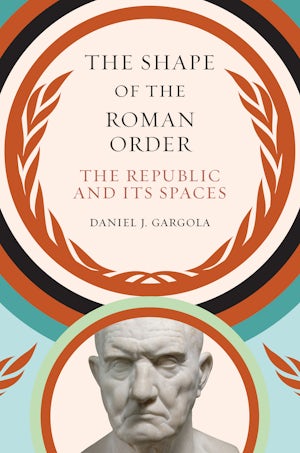The Shape of the Roman Order
The Republic and Its Spaces
By Daniel J. Gargola
304 pp., 6.125 x 9.25, 6 maps, notes, bibl., index
-
Paperback ISBN: 978-1-4696-6870-3
Published: November 2021 -
Hardcover ISBN: 978-1-4696-3182-0
Published: March 2017 -
E-book PDF ISBN: 979-8-8908-5144-4
Published: February 2017 -
E-book EPUB ISBN: 978-1-4696-3183-7
Published: February 2017
Studies in the History of Greece and Rome
Buy this Book
- Paperback $35.95
- Hardcover $45.00
- E-Book $29.99
For Professors:
Free E-Exam Copies
From what geometrical patterns Roman elites preferred to how they constructed their hierarchies in space, Gargola considers a wide body of disparate materials to demonstrate how spatial orientation dictated action, shedding new light on the complex peculiarities of Roman political organization.
About the Author
Daniel J. Gargola is associate professor of history at the University of Kentucky.
For more information about Daniel J. Gargola, visit
the
Author
Page.
Reviews
“Provides an insightful account of the role of geographic or spatial thought in the Roman self-understanding and will be invaluable for serious students of the Roman republic. . . . Recommended.”--Choice
“Makes a pretty compelling case that Roman concepts of space and its control were primarily shaped by religion—specifically, by the need to ensure that certain rites were performed correctly."--London Review of Books
“A thorough examination of the spatial practice of Rome’s public actors in the Republican period.”--American Historical Review
“Gargola's work displays an exemplary standard of scholarship and presents a very wide range of material in a novel light. His book is essential reading for serious students of the Roman Republic.”--John Rich, University of Nottingham
“In this highly original book, Gargola succeeds in looking at the Republic from a new perspective. Resisting the temptation to reconstruct the Roman Empire to appear more like a modern state, Gargola demonstrates the distinctive way the Roman elite conceptualized the geographical world around them. He analyzes what geometrical patterns they preferred, what hierarchies in space they constructed, how their domination worked, and how they managed the gods. This is cultural history at its best."--Martin Jehne, Technische Universitaet Dresden




